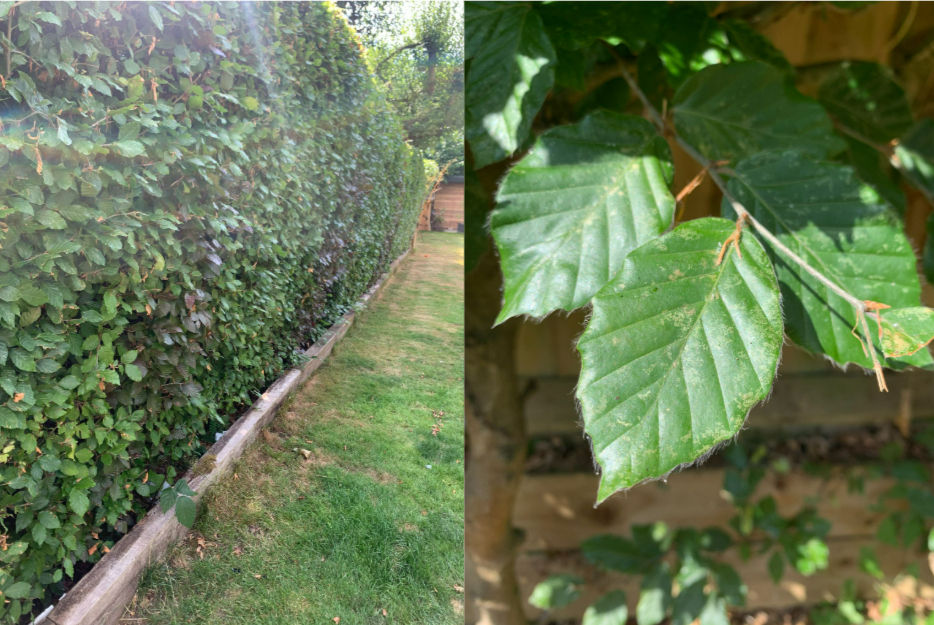Ever Wondered What Tree That Is? Meet the UK’s Most Common Trees
- Lewlandii Tree Services
- Jul 22
- 4 min read
Updated: Jul 23
Have you ever paused during a country walk or visit to a local park, wondering what types of trees surround you? The UK is home to a rich variety of trees, each with its own distinct characteristics and benefits. In this post, we’ll highlight some of the most common trees in the UK—like the English Oak, Silver Birch, Scots Pine, Common Ash, Beech, Sycamore, and Hawthorn. By the end, you’ll have a better eye for identifying these species and a deeper appreciation for how they enhance our landscapes.
English Oak (Quercus robur)
The English Oak is a powerful symbol of strength and endurance, capable of living for over 1,000 years. With a broad canopy and thick, rugged trunk, it provides vital habitats for over 300 species of insects, which in turn support birds and mammals.
The lobed leaves turn golden-brown in autumn, creating iconic seasonal colour. Its acorns are an essential food source for animals like jays, squirrels, and deer. The wood is highly prized for its durability and aesthetic grain, making it a popular choice for flooring, beams, and fine furniture.
The English Oak supports more wildlife than any other native tree in the UK. "35 species" understated its ecological value. (Source: Woodland Trust)

Silver Birch (Betula pendula)
Easily recognised by its silvery-white peeling bark and elegant silhouette, the Silver Birch thrives across the UK in woodlands, heathlands, and disturbed ground. It’s a pioneer species—one of the first to colonise cleared or poor soil areas.
Its pendulous branches and small, serrated leaves shimmer in the breeze. In spring, the sap can be tapped to produce a mildly sweet drink. The tree supports many insects and fungi, and its presence helps improve soil quality, paving the way for other species.
Silver Birch bark contains betulin, which has antifungal properties—helpful in creating biodiverse forest floors.

Scots Pine (Pinus sylvestris)
The Scots Pine is the UK’s only native pine and can soar to over 35–40 metres. It’s easily recognised by its straight, tall trunk and flaky orange-red bark. Found in Caledonian pinewoods and plantations, it supports rare wildlife such as the red squirrel, capercaillie, and Scottish crossbill.
Its seed-rich cones feed birds and small mammals. As a conifer, it retains its needles year-round, adding year-long greenery. Scots Pine is also economically vital—around 50% of British commercial conifer plantations are Scots Pine, valued for its strong, workable timber.

Common Ash (Fraxinus excelsior)
The Common Ash is a tall, graceful native tree with compound leaves and distinctive black winter buds. It plays a key role in biodiversity, hosting over 100 species of insects, and providing food and nesting for birds and mammals.
Its tough, flexible wood is traditionally used in making tool handles, sports equipment (like hurling sticks and oars), and furniture. Sadly, the species is currently under threat from ash dieback, a fungal disease estimated to kill up to 80% of UK ash trees. Conservation efforts are ongoing to breed resistant trees and restore affected habitats.

Beech (Fagus sylvatica)
Beech trees have smooth, silvery-grey bark and dense crowns, often forming stunning woodland canopies. In autumn, their leaves shift from vibrant green to rich copper and gold, creating some of the UK’s most picturesque woodland scenes.
Beech prefers chalky, well-drained soil, often found in ancient forests. Its seeds—called beech mast—feed a range of wildlife, from birds to rodents. The timber is pale, hard, and excellent for making furniture, flooring, kitchenware, and toys.
Beech trees can live for 200–300 years, though some may reach 400+ in good conditions.

Sycamore (Acer pseudoplatanus)
Despite being non-native (introduced to the UK in the Middle Ages), the Sycamore is now widespread and naturalised. It has large, maple-like leaves and winged seeds called samaras, which spin as they fall—often called “helicopter seeds.”
Tolerant of pollution and wind, Sycamore thrives in urban and rural areas alike, offering fast-growing shade and shelter. It’s often used in parks and roadside plantings. Its timber is smooth and light, popular in crafting musical instruments, kitchen utensils, and indoor furniture.
While useful, the Sycamore can be invasive in woodlands and tends to support fewer specialist wildlife species than native trees.

Hawthorn (Crataegus monogyna)
Known as the “May Tree”, Hawthorn explodes with white or pink blossoms in spring, coinciding with early May. Its thorny branches create dense, protective habitats for nesting birds and small mammals.
Hawthorn berries, known as haws, ripen in autumn and are rich in antioxidants. They’re often used in jams, jellies, and traditional herbal remedies. The tree is steeped in folklore, symbolising hope and protection. Its dense growth habit makes it ideal for hedgerows and garden boundaries, offering both privacy and year-round interest.

Embracing Nature's Treasures
From ancient oaks to delicate birches, the UK’s trees offer more than beauty—they form the backbone of ecosystems, support wildlife, and provide essential materials for daily life. Whether you're a seasoned naturalist or just enjoy a weekend stroll, knowing your trees enriches your connection to the world around you.
So next time you're out and about, take a moment to look up. That tree may be more than just part of the scenery—it could be a living piece of history.





Comments